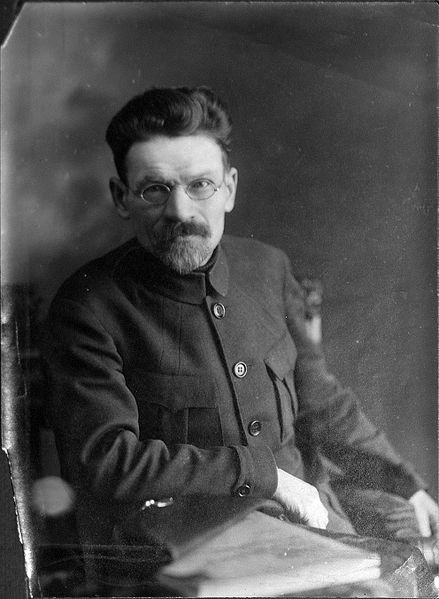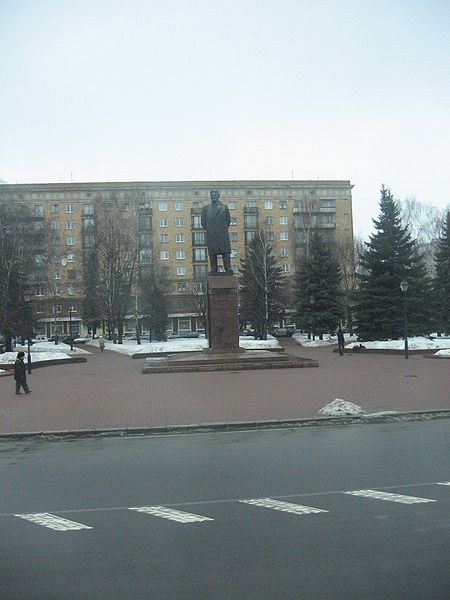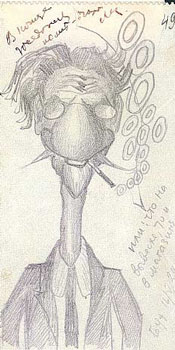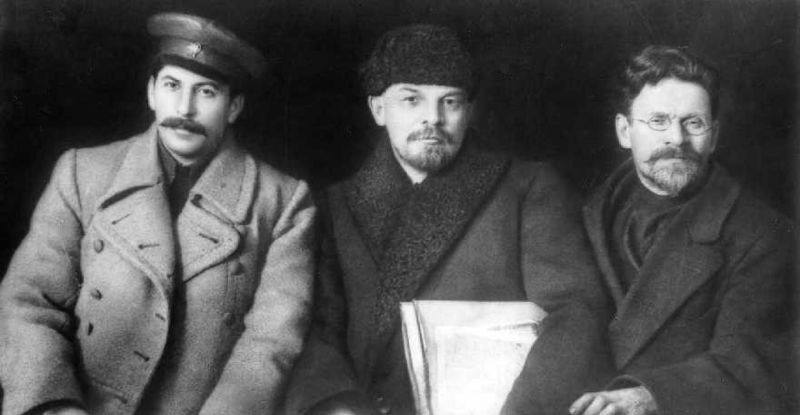<Back to Index>
- Physician Josef Leopold Auenbrugger, 1722
- Sculptor Karl Albert Bertel Thorvaldsen, 1770
- Chairman of the Presidium of the Supreme Soviet Mikhail Ivanovich Kalinin, 1875
PAGE SPONSOR



Mikhail Ivanovich Kalinin (Russian: Михаи́л Ива́нович Кали́нин; 1875 – 1946), known familiarly by Soviet citizens as "Kalinych," was a Bolshevik revolutionary and the nominal head of state of the Soviet Union from 1919 to 1946. From 1926 he was a member of the Politburo of the Communist Party of the Soviet Union, where he was one of the inner circle of party leaders around Soviet leader Joseph Stalin.
Mikhail Ivanovich Kalinin was born November 19 [O.S. November 7] 1875 to a poor peasant family of ethnic Russian origin in the village of Verkhnyaya Troitsa (Верхняя Троица), Tverskaya Gubernia, Russia. Kalinin finished his education at a local school in 1889 and worked for a time on a farm following the completion of his formal education. He later moved to Saint Petersburg, where he gained employment as a metal worker in 1895.
In 1906, he married the ethnic Estonian Katarina Loоrberg (Russian: Yekaterina Ivanovna Lorberg) (1882 – 1960). Kalinin joined the Russian Social Democratic Labor Party (RSDLP) in 1898, the year of its foundation. During the Russian Revolution of 1905, Kalinin worked for the Bolshevik party and on the staff of the Central Union of Metal Workers. He was later active on behalf of the RSDLP in Tiflis, Georgia (now Tbilisi), Reval, Estonia (now Tallinn), and Moscow. Kalinin was an early and devoted adherent of the Bolshevik faction of the RSDLP, headed by V.I. Lenin. He was a delegate to the 1912 Bolshevik Party Conference held in Prague, where he was elected an alternate member of the governing Central Committee and sent to work inside Russia. Kalinin was arrested for his political activities in 1916 and freed during the February Revolution of 1917 which overthrew the tsarist state. During this period, Kalinin joined the Petrograd Bolshevik committee and assisted in the organization of the party daily Pravda, newly legalized by the post-Tsarist regime. In April 1917, Kalinin, like many other Bolsheviks, advocated conditional support for the Provisional Government in cooperation with the Menshevik faction of the RSDLP — a position at odds with that of Lenin. He continued to oppose an armed uprising to overthrow the government of Alexander Kerensky throughout that summer. In the elections held for the Petrograd City Duma in the fall of 1917, Kalinin was chosen as mayor of the city, which he administered during and after the Bolshevik Revolution of November 7. In 1919, Kalinin was elected a member of the governing Central Committee of the Russian Communist Party as well as a candidate member of the Politburo. During this time the Gosudarstvennoye Politicheskoye Upravlenie (the State Political Directorate) used to send him ballerin dancers from Bolshoi Theater, with approval from Stalin's secretariat, in order to establish compromising documents against him. He was promoted to full membership on the Politburo in January 1926, a position which he retained until his death in 1946. When Yakov Sverdlov died in March 1919, Kalinin replaced him as President of the All-Russian Central Executive Committee, the titular head of state of
Soviet Russia. The name of this position was changed to Chairman of the
Central Executive Committee of the USSR in 1922 and to Chairman of the Presidium of the Supreme Soviet in 1938. Kalinin continued to hold the post without interruption until his retirement at the end of World War II. In 1920, Kalinin attended the 2nd World Congress of the Communist International in
Moscow as part of the Russian delegation, where he was seated on the
presidium rostrum and took an active part in the debates. He also delivered a report on Lenin and the Comintern to the 5th World Congress in 1924. Kalinin was a factional ally of Joseph Stalin during the bitter struggle for power which erupted following the death of Lenin in 1924. Kalinin
was one of comparatively few members of Stalin's inner circle springing
from peasant origins. These lowly social origins were widely publicized
in the official press, which habitually referred to Kalinin as the
"All-Union headman" (Всесоюзный староста) — a term hearkening to the
village commune — in conjunction with his role as titular head of state. In practical terms, by the 1930s Kalinin's role as a decision maker in the Soviet government was nominal. He held little power or influence beyond receiving diplomatic letters from abroad. Recalling him, future Soviet leader Nikita Khrushchev said
that, "I don't know what practical work Kalinin carried out under
Lenin. But under Stalin he was the nominal signatory of all decrees,
while in reality he rarely took part in government business. Sometimes
he was made a member of a commission, but people didn't take his
opinion into account very much. It was embarrassing to see this; one
simply felt sorry for Mikhail Ivanovich." Kalinin kept a low profile during the Great Purge of 1937. He was well aware of the repression; between 1937 and 1941 hundreds of people went to his dacha or sent petitions to him asking for help against the arrests. Although he opposed the executions of personal friends like Avel Yenukidze, he remained submissive to Stalin, who under the pretext of protecting him had his apartment always watched by NKVD officers. Kalinin's own wife was arrested by the secret police on October 25, 1938. She was forced under torture to confess to "counterrevolutionary Trotskyist activities" and sent to a labour camp. She was released in 1945, not long before her husband's death. Mikhail Ivanovich Kalinin retired in 1946 and died on June 3 of that same year in Moscow. Kalinin was honored with a major state funeral and was buried in the Kremlin Wall Necropolis. During his lifetime, three large cities — Tver, Korolyov and Königsberg — were named or renamed in his honor; the last has retained the name Kaliningrad after the fall of the USSR.
